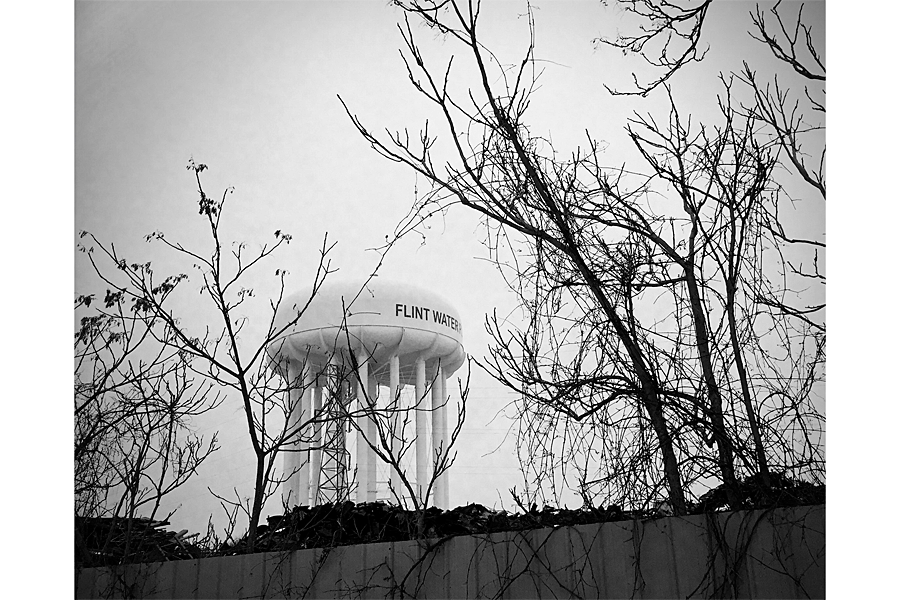Lead poisoning: 'Flint is the tip of the iceberg'
Loading...
Flint may be in crisis, but it isn’t the only city in Michigan where high levels of lead poses urgent risks.
According to state records, two Michigan municipalities and six private water supplies, in addition to Flint, meet or exceed the federal limit on lead and copper in tap water. Exposure to high levels of such toxins can have severe and even fatal health complications, especially among the young, health care officials say. In fact, compared to Flint, a higher percentage of kids in a handful of cities – including Grand Rapids, Jackson, Detroit, Saginaw, Muskegon, and Holland – test positive for elevated levels of lead.
As the drinking water contamination crisis continues to unravel in Flint, health experts are now recognizing the hazard in other regions.
In Flint, five percent of the city’s children test positive for high levels of lead. But in Grand Rapids as well as the greater Detroit area, more than 10 percent of children were found to have lead in them in 2014. For some parts of Detroit, it’s as high as 13.5 percent. And in south-central Michigan, more than 12 percent of the 640 children from the town of Adrian had elevated levels of lead.
“This is still an issue. It’s not going away,” Dr. Eden Wells, chief medical executive of the Michigan Department of Health and Human Services, told the Detroit News. Despite the millions of dollars spent on public health campaigns throughout the years, lead poisoning remains a serious concern.
In Detroit, researchers famously found a correlation between between high levels of lead and public schools’ poor performance on standardized tests.
Part of the contamination in Flint can be attributed to the use of hazardous lead service pipes that connect municipal main water supplies to older homes and communities. Many cities stopped using them decades ago, but millions of lead lines are still in use today.
"I think Flint is the tip of the iceberg," Yanna Lambrinidou, an assistant science and technology studies professor at Virginia Tech, told Michigan Live.
As The Christian Science Monitor's Jessica Mendoza reports, it's a problem that extends beyond Michigan.
“Flint is a microcosm,” says Robert Glennon, a professor of law and public policy at the University of Arizona in Tuscon and author of the book, “Unquenchable: America's Water Crisis and What To Do About It.” “The maintenance of water systems and wastewater systems is not just an urban problem, or a problem for places with low-income residents. It’s a problem all over the nation that needs to be addressed.”
In response, some cities are launching initiatives to upgrade their water systems, as well as developing sustainable funding mechanisms to aid those efforts. Chicago, for instance, is in the middle of a 10-year plan, begun in 2012, to replace 900 miles of century-old pipes throughout the city – a project financed in part by cutting payroll at the Department of Water Management, raising water rates, and partnering with private contractors.
Next door to Flint, the city of Burton – using the state of Michigan’s revolving fund for drinking water infrastructure projects – has likewise begun to replace its 1930s water mains, but with cheaper, non-corrosive, environmentally-friendly PVC pipes. The effort received an award from Genesee County in November.
But while Flint failed in properly treating its water supply, there is another culprit for lead poisoning across the state: lead-based paint. Toddlers and infants are especially vulnerable as they spent a lot of time on the ground, where lead paint residues linger in dust and soil.
Although lead poisoning is a far rarer occurrence now than it was decades ago, the risk persists, especially in low-income areas such as Detroit. Homeowners can tackle the problem by repainting an older home and replacing its plumbing fixtures, but some may not be able to afford such remodeling. For some apartment tenants, it may not even be possible.
Paul Haan of the Healthy Homes Coalition of West Michigan told Bridge Magazine’s Mike Wilkinson that as many as 60,000 homes need lead abatement in western Michigan alone.






